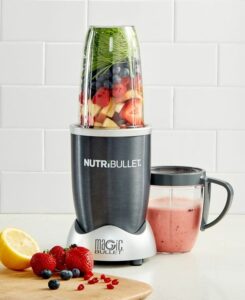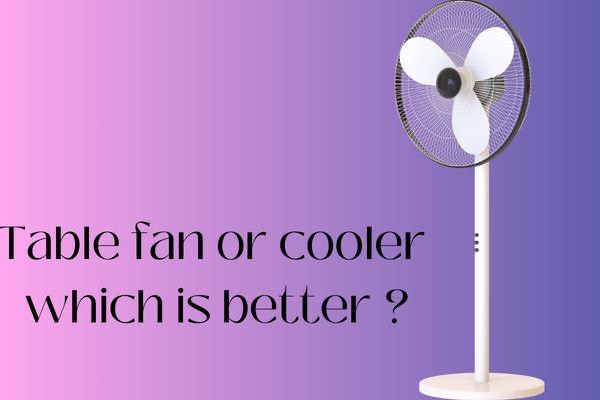Introduction : Unveiling the Difference between mixer grinder and blender
You may have come across the terms “mixer grinder” and “blender”. What is the difference between mixer grinder and blender ? While they may seem similar at first glance, there are some key differences between these two essential kitchen tools. In this blog post, we will explore the difference between mixer grinders and blenders, their respective types and mechanisms, and answer some frequently asked questions that can help you make an informed decision. So let’s dive in and discover which appliance is best suited for your cooking needs!

What is the difference between mixer grinder and blender and food processor ?
Mixer grinder, blender, and food processor are all kitchen appliances that serve different purposes.
A mixer grinder is primarily used for grinding and mixing ingredients. It typically comes with multiple jars of different sizes to handle various tasks like grinding spices, making chutneys or pastes, and blending liquids. The main function of a mixer grinder is to grind dry or wet ingredients into a fine powder or paste consistency.
On the other hand, a blender is designed for pureeing and liquefying ingredients. It has a powerful motor that can crush ice cubes and blend fruits into smoothies or shakes effortlessly. Blenders usually come with one large jar or container specifically designed for blending purposes.
A food processor combines the functionalities of both a mixer grinder and blender but in a more versatile manner. It can chop vegetables, shred cheese, knead dough, emulsify sauces, grind meat – essentially performing multiple tasks in the kitchen.
While all three appliances have their own unique features and uses; mixers grinders specialize in grinding dry/wet ingredients; blenders excel at blending liquids; while food processors offer more versatility by combining several functions into one appliance

Types of mixer grinder
When it comes to mixer grinders, there are various types available in the market. Each type has its own unique features and advantages. Let’s take a closer look at some common types of mixer grinders.
1. Handheld Mixer Grinder:
This type is compact and easy to use. It is designed for small tasks like whipping cream, mixing batters, or blending spices. The handheld mixer grinder is lightweight and portable, making it perfect for those who have limited kitchen space or prefer convenience.
2. Stand Mixer Grinder:
A stand mixer grinder consists of a motorized base with a bowl and attachments such as beaters, dough hooks, and whisks. This type of mixer grinder is ideal for heavy-duty tasks like kneading dough or mixing large quantities of ingredients.
3. Juicer Mixer Grinder:
As the name suggests, this type combines the functionality of a juicer along with a regular mixer grinder. It allows you to extract fresh juice from fruits while also being able to perform other grinding tasks.
4. Multipurpose Mixer Grinder:
This versatile type can handle multiple functions such as grinding dry spices, making chutneys, blending soups or smoothies, and even chopping vegetables. It usually comes with different jars or containers for specific purposes.
These are just a few examples among many different types of mixer grinders available in the market today. Depending on your specific needs and preferences in the kitchen, you can choose one that suits you best!
Types of blender
Blenders come in various types, each designed to cater to different blending needs. Here are some common types of blenders:
1. Countertop Blenders:
These are the most commonly used blenders and are perfect for everyday blending tasks. They usually have a large capacity and powerful motors that can handle tough ingredients like ice and frozen fruits.
2. Immersion Blenders:
Also known as handheld or stick blenders, these compact devices allow you to blend directly in the pot or bowl without transferring the contents. They are great for making soups, sauces, and smoothies on the go.
3. Personal Blenders:
As the name suggests, personal blenders are smaller in size compared to countertop blenders. They come with portable cups that you can blend your ingredients directly into and take it on-the-go.
4. High-Speed Blenders:
These blenders feature powerful motors that can reach high speeds quickly, resulting in smoother blends with finer textures. They often have additional features like preset programs for specific recipes.
5. Bullet Blenders:
Popularized by brands like Nutribullet, bullet blenders offer convenience and versatility with their compact design and easy-to-use functions. They’re ideal for making single-serve smoothies or grinding small quantities of ingredients.
6.Blender/Food Processor Combo:
Some blender models also double up as food processors, offering multiple functionalities in one appliance.
Remember when choosing a blender type, consider your specific blending needs and lifestyle preferences to find the perfect fit!
Mechanism of mixer grinder and blender
Mixer grinders and blenders are both indispensable kitchen appliances that help in simplifying our cooking tasks. Understanding the mechanism behind these two devices can give us a better idea of their functionalities.
A mixer grinder typically consists of a motor, blades, jars, and controls. The motor is the heart of the appliance, providing power to spin the blades at varying speeds. These sharp blades are designed to chop, grind, or blend different ingredients depending on your requirements. The speed control knobs allow you to adjust the intensity as needed.
On the other hand, blenders have a similar setup but with some differences in design and functionality. Blenders usually come with larger capacity jars compared to mixer grinders which enable them to process larger quantities of ingredients at once. They also often feature specialized blending presets for specific tasks like making smoothies or crushing ice.
Both mixer grinders and blenders function by rotating their blades at high speeds when powered on. This rapid rotation creates a vortex within the jar that helps in mixing and grinding various ingredients effectively.
While mixers are primarily used for dry grinding spices or wet grinding batters, blenders excel at pureeing fruits and vegetables into smooth textures or creating creamy soups and sauces.
Understanding how these devices work will help you choose between them based on your specific needs in the kitchen!
Frequently asked questions about mixer grinder and blender
1.Can we grind hot food in mixer grinder?
Ans.Yes, you can grind hot food in a mixer grinder, but it’s important to be cautious and allow it to cool slightly before grinding to avoid any accidents or damage.
2.Which things you should not put in mixer grinder?
Ans. It is not advisable to put items like ice cubes, hard spices, and very fibrous vegetables (like celery) in a mixer grinder as they can damage the blades and motor.
3.Can I make smoothie in grinder ?
Ans.While it’s not ideal, you can make a smoothie in a grinder by pulsing ingredients together in small batches until desired consistency is reached, but it may not yield the same smooth texture as a dedicated blender.
4.Can you chop carrots in a blender ?
Ans.Yes, you can chop carrots in a blender by pulsing them in short bursts until desired size is achieved. Add a small amount of liquid if needed to aid the blending process.
5.Can we make juice in mixer grinder ?
Ans.While it’s not the ideal appliance for making juice, you can make juice in a mixer grinder by blending fruits/vegetables with water, straining the pulp, and adding sweeteners if desired.
6.Can you use a blender without liquid ?
Ans. It is not recommended to use a blender without any liquid as it can strain the motor and potentially damage the blades. It’s important to add at least a small amount of liquid for proper blending and to prevent overheating.
7.Can you use a blender as a mixer for baking ?
Ans.While a blender can be used as a makeshift mixer for baking, it may not achieve the same results as a dedicated mixer. It’s best to use the appropriate tool for the specific task.
8.What is the difference between a 2-jar and a 3-jar mixer grinder?
Ans.The difference between a 2-jar and a 3-jar mixer grinder is that a 2-jar grinder comes with a small jar for grinding spices or chutneys, while a 3-jar grinder includes an additional larger jar for blending or grinding larger quantities of ingredients.
9.Can we beat eggs in mixer grinder?
Ans.Yes, you can beat eggs in a mixer grinder by using the whipping attachment or paddle attachment. However, it’s important to monitor the speed and duration to avoid over-beating the eggs.
10.What is the use of Whip button in mixer grinder?
Ans.The whip button in a mixer grinder is used for whipping or aerating ingredients such as cream, eggs, or butter to incorporate air and create a light and fluffy texture.
11.How many watt of mixer grinder is essential for the household use?
Ans.The wattage of a mixer grinder essential for household use depends on the specific needs and usage. Typically, a wattage range of 500-750 watts is sufficient for most domestic tasks.
12. Are blenders suitable for crushing ice?
And. Yes! Blenders are perfect for crushing ice cubes due to their powerful motors and sturdy blade assembly which ensures efficient crushing without damaging the appliance.
13. Can I knead dough using either a mixer grinder or blender?
Ans. No! Kneading dough requires special attachments that aren’t usually found in regular mixers or blenders unless specified by the manufacturer.
Remember to always refer to the user manual provided by the manufacturer before attempting any specific functions not commonly associated with your appliance model.
Conclusion
It is clear that a mixer grinder and a blender are two different appliances with distinct functionalities. While both are essential in the kitchen, they serve different purposes.
Happy cooking!


